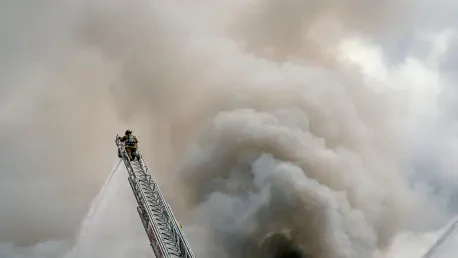Imagine a desperate moment in the early hours of the morning, dialing Triple Zero for a life-threatening emergency, only to be met with silence on the line—a harrowing scenario that has become a reality for many Australians during recent network outages by a major telecommunications provider, exposing critical flaws in emergency access systems. The inability to reach help during dire situations has sparked widespread concern, prompting a deeper look into the reliability of telecom networks. This roundup gathers insights, critiques, and recommendations from various industry experts, consumer advocates, and regulatory perspectives to unpack the severity of these disruptions and explore paths toward stronger safeguards for public safety.
Unpacking the Crisis: Network Failures and Public Safety
Scope of the Disruptions
Recent network failures in Australia have highlighted a pressing issue: the breakdown of access to emergency services like Triple Zero during critical moments. A notable incident in Dapto, New South Wales, saw a nine-hour outage that blocked multiple attempts to reach emergency responders, raising alarms about the robustness of telecom infrastructure. Industry analysts point out that such disruptions are not isolated, with broader outages affecting hundreds of customers across regions like South Australia and the Northern Territory, resulting in tragic outcomes.
Impact on Lives and Communities
Consumer advocacy groups emphasize the human toll of these failures, noting documented cases where the inability to contact emergency services led to loss of life. The gravity of these incidents has fueled public outcry, with many questioning how a routine service interruption could escalate into a matter of life and death. Reports suggest that rural and remote areas face even greater risks, as their reliance on limited network coverage amplifies the consequences of any downtime.
Why Reliability Matters
Technology consultants stress that telecom reliability is not merely a convenience but a cornerstone of public safety. They argue that the expectation of uninterrupted service during emergencies is non-negotiable, pushing for a reevaluation of how providers prioritize network stability. This collective concern sets the stage for a broader discussion on accountability, technical preparedness, and the urgent need for systemic improvements across the industry.
Diverse Perspectives on Causes and Consequences
Technical Shortcomings Under Scrutiny
Industry engineers have identified specific technical missteps, such as failed firewall upgrades, as key contributors to outages like the one in Dapto. They critique the lack of effective contingency measures during routine maintenance, suggesting that such oversights reveal deeper flaws in planning and execution. This perspective calls for stricter protocols to ensure that upgrades do not compromise service continuity, especially for emergency communications.
Regulatory and Policy Responses
Regulatory bodies, through their ongoing investigations, underscore the need for enforceable standards to prevent recurring network failures. Some policy experts advocate for harsher penalties and mandatory reliability benchmarks, arguing that current frameworks fail to hold providers accountable for lapses in critical services. Their stance highlights a growing demand for government intervention to mandate robust backup systems and transparent reporting during crises.
Consumer and Community Voices
Feedback from affected communities reveals a profound loss of trust in telecom providers following these incidents. Advocacy groups argue that customers deserve clear communication and swift action during outages, not just apologies after the fact. This viewpoint pushes for greater consumer involvement in shaping telecom policies, ensuring that public safety remains at the forefront of industry priorities rather than an afterthought.
Rural Vulnerabilities and Inequities
Experts focusing on regional disparities note that rural areas suffer disproportionately during network blackouts due to limited infrastructure and alternative communication options. They warn that without targeted investments in these regions, outages will continue to exacerbate existing inequities in access to emergency services. This angle urges a tailored approach to network enhancements, prioritizing areas most at risk of isolation during failures.
Industry Recommendations for Robust Networks
Strengthening Backup Systems
Technical advisors recommend that telecom companies invest heavily in redundant systems to maintain service during unexpected disruptions. They suggest that failover mechanisms should be a standard feature, not an optional add-on, to guarantee emergency access under any circumstances. This proactive strategy aims to mitigate risks before they escalate into full-blown crises impacting vulnerable populations.
Enhancing Pre-Upgrade Testing
Another common suggestion from industry watchers is the implementation of rigorous testing protocols before any network upgrades are rolled out. They argue that simulated stress tests could uncover potential weaknesses, preventing mishaps like failed traffic rerouting during maintenance. Such measures, though resource-intensive, are seen as essential to avoiding disruptions that endanger lives.
Transparent Crisis Communication
Public relations specialists in the telecom sector highlight the importance of real-time updates and honest dialogue with customers during outages. They believe that clear messaging about the issue, expected resolution times, and interim solutions can help maintain trust and reduce panic. This approach focuses on rebuilding confidence through accountability and responsiveness rather than reactive damage control.
Reflecting on Insights and Next Steps
Looking back, the discourse surrounding these network outages revealed a shared recognition among experts, regulators, and communities that telecom reliability is paramount to public safety. The varied perspectives underscored a consensus on the devastating impact of emergency call failures, driven by technical errors and inadequate risk management. Differing views on solutions—from stricter regulations to enhanced testing—illustrated the complexity of addressing such a multifaceted issue.
Moving forward, stakeholders must prioritize actionable reforms, such as mandating robust backup infrastructures and fostering collaboration between providers and regulators to set higher reliability standards. Consumers, too, can play a role by advocating for transparency and supporting policies that protect emergency access. For those seeking deeper understanding, exploring reports from industry watchdogs and consumer advocacy platforms offers valuable insights into ongoing efforts to prevent future tragedies. This collective push toward improvement remains a critical step in ensuring that no call for help goes unanswered.









